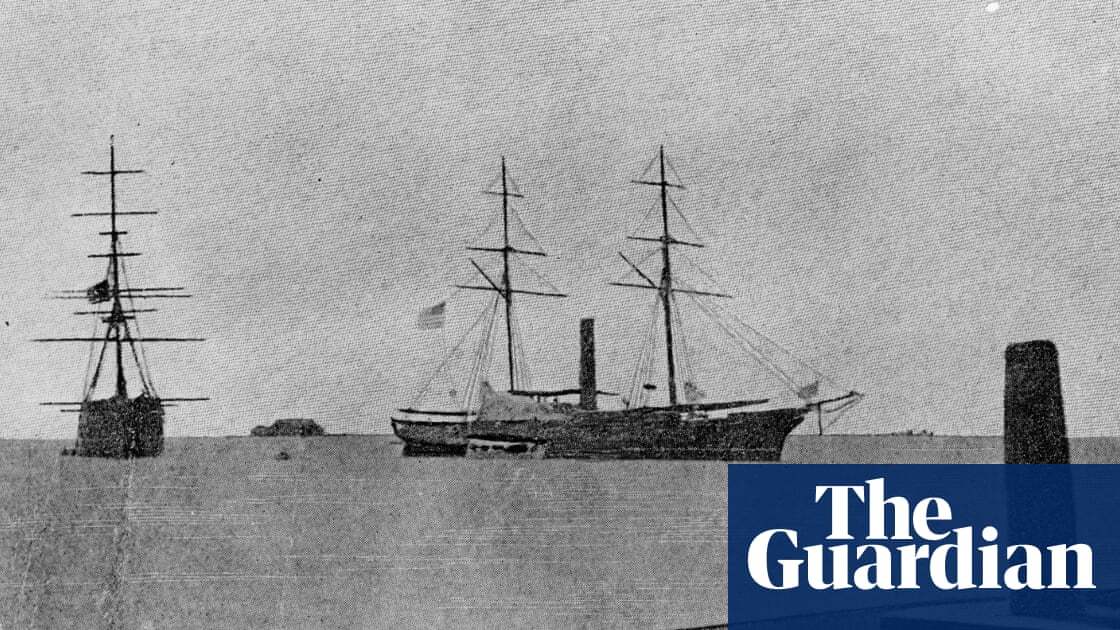In ceremony in Kake, military acknowledges bombardment of village that destroyed it and led to many deaths
In a ceremony Saturday afternoon, the US navy apologized for firing upon and torching the Alaska Native village of Kake in 1869.
Surrounded by tribal Chilkat weavings, historic photographs and other Lingít artwork in the Kake elementary and high school gymnasium, R Adm Mark B Sucato expressed the military’s regret, in the first of two apologies planned by the military for bombardments of Alaska Native communities in the late 1800s.
“This has been 155 years in the making,” said Joel Jackson, the president of the Organized Village of Kake, of the apology to the Lingít (often known as the Tlingit) people. “It’s becoming real because we never talked about it and now we are.”
The event also included remarks from other tribal leaders and elders, a blessing from the tribe and a navy chaplain, and performances by the local Native Ḵéex’ Ḵwáan Dancers and the navy band.
A second ceremony is planned for 26 October, the 142nd anniversary of the navy’s 1882 bombardment of the nearby village of Angoon.
Still waiting on that specific example. I’m also a little leery of the “explicit murder of over 1.5 million known civillians” claim. Source on that one?
Wikipedia has brief introductions to both concepts for you since it’s the first time you’ve heard about america’s involvement in the middle east.
you really did just refuse to link wikipedia while citing it as your source
Uh huh. I’ll go “do my own research” right away, thanks.
https://www.hrw.org/reports/2003/usa1203/5.5.htm
https://archive.globalpolicy.org/security/issues/iraq/occupation/report/3weapons.htm
https://www.newyorker.com/magazine/2020/12/21/americas-war-on-syrian-civilians
Just a couple of examples, and that’s not even getting into the farce of dual use targets
From the first article:
The Kurds told reporters covering the offensive that there were a thousand Islamic State fighters at the mountain base.
While another source disagrees, this is a “he said she said” situation.
From the second:
Ground-launched cluster strikes caused hundreds of civilian casualties across Iraq. Human Rights Watch documented cases in most of the major cities, including al-Hilla, al-Najaf, Karbala’, Baghdad, and Basra. Doctors at local hospitals provided statistics that supported individual testimony of deaths and injuries. The majority of these casualties resulted from the heavy use of cluster munitions in populated areas where soldiers and civilians commingled.
The third quotes the very paragraph above from the second, but quotes around and omits the line about areas where soldiers and civilians comingled.
From the fourth:
Although human-rights activists insist that the coalition could have done more to protect civilians, Townsend is right: unlike Russia, America does not bomb indiscriminately. The U.S. razed an entire city, killing thousands in the process, without committing a single obvious war crime.
Note, US propaganda aside, I absolutely agree that war crimes were committed, specifically with regards to the use of certain types of munitions. This is a separate allegation from deliberate targeting and indiscriminate destruction of exclusively civilian populations though.
War is hell, after all. All war is hell. It always kills civilians if they are present, yet it remains legal if pursued with appropriate “care”. It takes more, then, than fighting occuring within residential areas to demonstrate the targeting of civilians.
K





